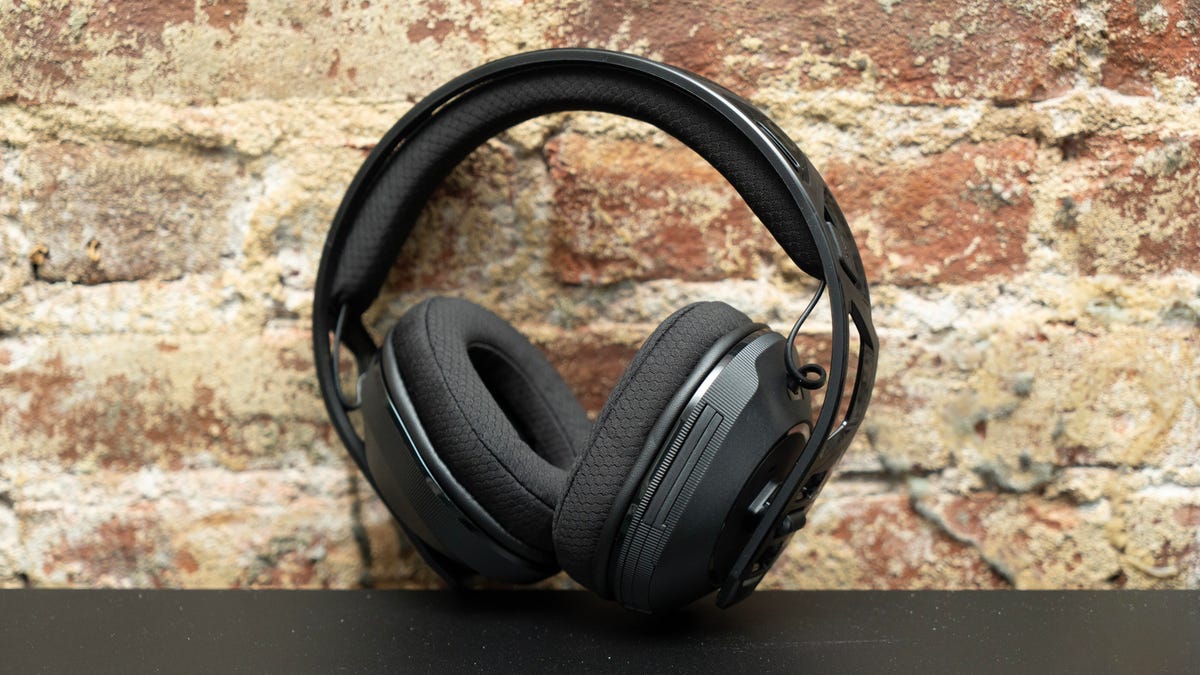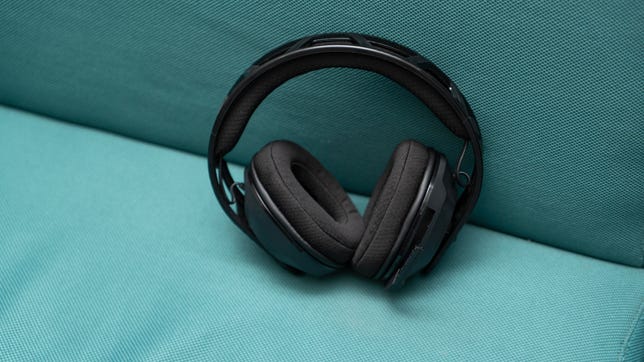Nacon’s Rig series of gaming headsets frequently surprise me. Sometimes the surprise is for the good and sometimes not, but the Rig 600 Pro series definitely falls into the former category. At the same roughly $100 price as other wireless models, including the Turtle Beach Stealth 600 Gen 2, SteelSeries Arctis 1 wireless and HyperX Cloud Stinger 2 wireless, the Rig 600 Pro offers similar performance and comfort for the same money but throws in support for simultaneous Bluetooth operation, which requires a price step up for other major competitors, except for the Corsair HS55 Core Wireless.
The headset comes in two versions, one for Xbox (the HX) and one for PlayStation (the HS), though they both work with the Nintendo Switch, PC, and any platform with Bluetooth audio, and are priced the same.
It’s light at only 240 grams, but the tradeoff is it feels like it’s primarily plastic. It doesn’t seem flimsy, and the snap-in earcup design means the headband’s less likely to break if stress is put on the cup. But I’m not a huge fan of the three-position design, since it’s hard to get an exact fit. On me, at least, the middle position feels a bit too short and the bottom position is definitely too long.
Still, even if the fit isn’t quite right, the headband and earcups still have enough padding and give to make it comfortable.

The mic flips up into the left earcup flush with the front.
There are no controls on the right earcup. The left houses power, volume, multifunction (for contextual control of media playback and calls) and mode (for cycling between Bluetooth, dual connections and USB wireless, which it calls Game mode). There’s also the USB-C connector for charging. The buttons are a little too hard to quickly distinguish by feel to press, though their locations are memorable for differentiating among them — the mode button is close to the top of the earcup.
Regardless of which platform you’re connected to, you control the settings via an app, which lets you control mic gain to +/-3 or +/-6 decibels. You can also choose from eight steps of mic monitoring levels, create up to three custom output equalizer presets with the 10-step EQ (in addition to the predefined curves), define which mode the headset starts up in and make a few more minor features. One nice touch is the Test mode, where you can verify each of the buttons and the mic are working.
I don’t love app-only control. I charge my phone on the other side of my room and I primarily use a desktop system, so it just irks me. It also means you have to be in dual-connection mode to change the settings, which can be annoying if you don’t want to use the Bluetooth for whatever reason.
The mic is nothing spectacular, but not awful — unless you’ve got noise in the background. I think it uses some sort of aggressive noise cancellation that suppresses background noise but makes voice sound a little hissy and compressed. You can’t disable it either. If there’s no noise, voice sounds better.

